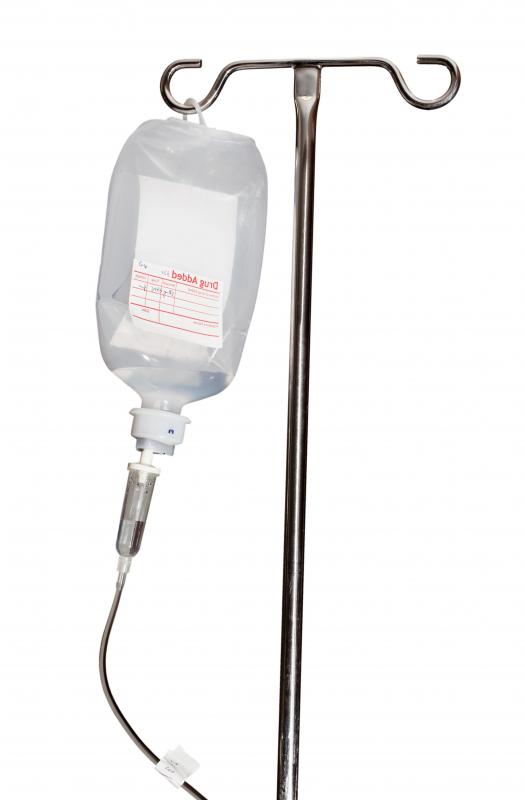At TheHealthBoard, we're committed to delivering accurate, trustworthy information. Our expert-authored content is rigorously fact-checked and sourced from credible authorities. Discover how we uphold the highest standards in providing you with reliable knowledge.
What is a Necrotizing Soft Tissue Infection?
A bacterial infection that causes the cellular death of infected tissue is called a necrotizing soft tissue infection (NSTI). The bacterium causes toxins to be released that invade the surrounding tissue, cutting off blood supply and adding poisons to the flesh. This can result in the loss of skin and muscle in the infected area. Treatment for these infections usually involves the surgical removal of the infected tissue and the administration of antibiotics. If a necrotizing soft tissue infection is suspected, immediate evaluation by medical professionals is recommended.
Necrotizing soft tissue infections usually begin because of a small wound. The area becomes red or purplish after a few days and will be tender to the touch. Then the immune system’s inflammatory response causes the body to produce exudates, and pus builds inside the wound. The skin may eventually turn dark in color, signaling the flesh has begun to necrotize, or die off.

When a bacterium causes a necrotizing soft tissue infection, the body experiences other symptoms due to the circulating toxins and bacteria. Most people will have a fever and chills at this stage of a necrotizing soft tissue infection. These symptoms may be accompanied by muscle weakness, dizziness, and nausea. If left untreated, the bacteria and toxins will spread throughout the bloodstream causing sepsis and shock, which may be fatal.
Treatment of a necrotizing soft tissue infection begins with the intravenous (IV) administration of broad-spectrum antibiotics. The medical staff will take samples from the infected area to be cultured. Bacteria cultures will identify the bacterium causing the infection, allowing the doctors to prescribe an antibiotic specific to that type of bacteria.
A necrotizing soft tissue infection can result in a disfiguring loss of tissue and require the amputation of the affected limb. Treatment may require a surgeon to perform a tissue debridement to remove the necrotized flesh. This involves creating an opening in the general area of the infection and scraping the infected tissue out of the body. The wound is then closed over the debrided area, and a drain may be implanted. If the surgical debridement does not effectively remove all the infected tissue and bacteria continue to grow, the limb may be amputated to prevent the spread of the bacteria.
When bacterium causing the necrotizing soft tissue infection is anaerobic, physicians may utilize a hyperbaric chamber to promote the saturation of the bacteria with an antibiotic. The increased oxygen available may be able to reduce the toxins in the body. Therapy involving the intravenous (IV) transfer of immunoglobulins from a healthy individual may provide the immune system with the boost it needs to fight the infection.
AS FEATURED ON:
AS FEATURED ON:











Discuss this Article
Post your comments